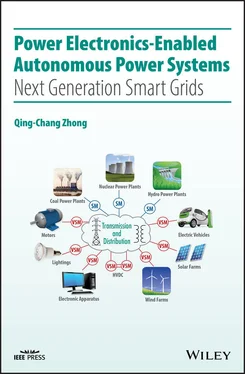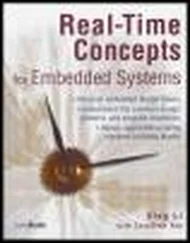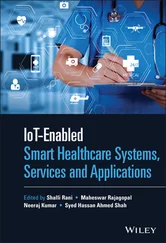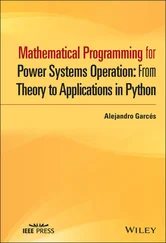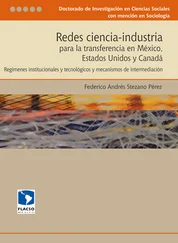1 Cover
2 List of Figures
3 List of Tables
4 Foreword
5 Preface
6 Acknowledgments
7 About the Author
8 List of Abbreviations
9 Chapter 1: Introduction1.1 Motivation and Purpose 1.2 Outline of the Book 1.3 Evolution of Power Systems 1.4 Summary
10 Part I: Theoretical Framework Chapter 2: Synchronized and Democratized (SYNDEM) Smart Grid 2.1 The SYNDEM Concept 2.2 SYNDEM Rule of Law – Synchronization Mechanism of Synchronous Machines 2.3 SYNDEM Legal Equality – Homogenizing Heterogeneous Players as Virtual Synchronous Machines (VSM) 2.4 SYNDEM Grid Architecture 2.5 Potential Benefits 2.6 Brief Description of Technical Routes 2.7 Primary Frequency Response (PFR) in a SYNDEM Smart Grid 2.8 SYNDEM Roots 2.9 Summary Chapter 3: Ghost Power Theory 3.1 Introduction 3.2 Ghost Operator, Ghost Signal, and Ghost System 3.3 Physical Meaning of Reactive Power in Electrical Systems 3.4 Extension to Complete the Electrical‐Mechanical Analogy 3.5 Generalization to Other Energy Systems 3.6 Summary and Discussions
11 Part II: 1G VSM: Synchronverters Chapter 4: Synchronverter Based Generation 4.1 Mathematical Model of Synchronous Generatorss 4.2 Implementation of a Synchronverter 4.3 Operation of a Synchronverter 4.4 Simulation Results 4.5 Experimental Results 4.6 Summary Chapter 5: Synchronverter Based Loads 5.1 Introduction 5.2 Modeling of a Synchronous Motor 5.3 Operation of a PWM Rectifier as a VSM 5.4 Simulation Results 5.5 Experimental Results 5.6 Summary Chapter 6: Control of Permanent Magnet Synchronous Generator (PMSG) Based Wind Turbines 6.1 Introduction 6.2 PMSG Based Wind Turbines 6.3 Control of the Rotor‐Side Converter 6.4 Control of the Grid‐Side Converter 6.5 Real‐time Simulation Results 6.6 Summary Chapter 7: Synchronverter Based AC Ward Leonard Drive Systems 7.1 Introduction 7.2 Ward Leonard Drive Systems 7.3 Model of a Synchronous Generator 7.4 Control Scheme with a Speed Sensor 7.5 Control Scheme without a Speed Sensor 7.6 Experimental Results 7.7 Summary Chapter 8: Synchronverter without a Dedicated Synchronization Unit 8.1 Introduction 8.2 Interaction of a Synchronous Generator (SG) with an Infinite Bus 8.3 Controller for a Self‐synchronized Synchronverter 8.4 Simulation Results 8.5 Experimental Results 8.6 Benefits of Removing the Synchronization Unit 8.7 Summary Chapter 9: Synchronverter Based Loads without a Dedicated Synchronisation Unit 9.1 Controlling the DC‐bus Voltage 9.2 Controlling the Power 9.3 Simulation Results 9.4 Experimental Results 9.5 Summary Chapter 10: Control of a DFIG Based Wind Turbine as a VSG (DFIG‐VSG) 10.1 Introduction 10.2 DFIG Based Wind Turbines 10.3 Differential Gears and Ancient Chinese South‐pointing Chariots 10.4 Analogy between a DFIG and Differential Gears 10.5 Control of a Grid‐side Converter 10.6 Control of the Rotor‐Side Converter 10.7 Regulation of System Frequency and Voltage 10.8 Simulation Results 10.9 Experimental Results 10.10 Summary Chapter 11: Synchronverter Based Transformerless Photovoltaic Systems 11.1 Introduction 11.2 Leakage Currents and Grounding of Grid‐tied Converters 11.3 Operation of a Conventional Half‐bridge Inverter 11.4 A Transformerless PV Inverter 11.5 Real‐time Simulation Results 11.6 Summary Chapter 12: Synchronverter Based STATCOM without an Dedicated Synchronization Unit 12.1 Introduction 12.2 Conventional Control of STATCOM 12.3 Synchronverter Based Control 12.4 Simulation Results 12.5 Summary Chapter 13: Synchronverters with Bounded Frequency and Voltage 13.1 Introduction 13.2 Model of the Original Synchronverter 13.3 Achieving Bounded Frequency and Voltage 13.4 Real‐time Simulation Results 13.5 Summary Chapter 14: Virtual Inertia, Virtual Damping, and Fault Ride‐through 14.1 Introduction 14.2 Inertia, the Inertia Time Constant, and the Inertia Constant 14.3 Limitation of the Inertia of a Synchronverter 14.4 Reconfiguration of the Inertia Time Constant 14.5 Reconfiguration of the Virtual Damping 14.6 Fault Ride‐through 14.7 Simulation Results 14.8 Experimental Results 14.9 Summary
12 Part III: 2G VSM: Robust Droop Controller Chapter 15: Synchronization Mechanism of Droop Control 15.1 Brief Review of Phase‐Locked Loops (PLLs) 15.2 Brief Review of Droop Control 15.3 Structural Resemblance between Droop Control and PLL 15.4 Operation of a Droop Controller as a Synchronization Unit 15.5 Experimental Results 15.6 Summary 16 Robust Droop Control 16.1 Control of Inverter Output Impedance 16.2 Inherent Limitations of Conventional Droop Control 16.3 Robust Droop Control of R‐inverters 16.4 Robust Droop Control of C‐inverters 16.5 Robust Droop Control of L‐inverters 16.6 Summary 17 Universal Droop Control 17.1 Introduction 17.2 Further Insights into Droop Control 17.3 Universal Droop Controller 17.4 Real‐time Simulation Results 17.5 Experimental Results 17.6 Summary 18 Self‐synchronized Universal Droop Controller 18.1 Description of the Controller 18.2 Operation of the Controller 18.3 Experimental Results 18.4 Real‐time Simulation Results from a Microgrid 18.5 Summary 19 Droop‐Controlled Loads for Continuous Demand Response 19.1 Introduction 19.2 Control Framework with a Three‐port Converter 19.3 An Illustrative Implementation with the ‐converter 19.4 Experimental Results 19.5 Summary 20 Current‐limiting Universal Droop Controller 20.1 Introduction 20.2 System Modeling 20.3 Control Design 20.4 System Analysis 20.5 Practical Implementation 20.6 Operation under Grid Variations and Faults 20.7 Experimental Results 20.8 Summary
13 Part IV: 3G VSM: Cybersync Machines 21 Cybersync Machines 21.1 Introduction 21.2 Passivity and Port‐Hamiltonian Systems 21.3 System Modeling 21.4 Control Framework 21.5 Passivity of the Controller 21.6 Passivity of the Closed‐loop System 21.7 Sample Implementations for Blocks and 21.8 Self‐Synchronization and Power Regulation 21.9 Simulation Results 21.10 Experimental Results 21.11 Summary
14 Part V: Case Studies 22 A Single‐node System 22.1 SYNDEM Smart Grid Research and Educational Kit 22.2 Details of the Single‐Node SYNDEM System 22.3 Summary 23 A 100% Power Electronics Based SYNDEM Smart Grid Testbed 23.1 Description of the Testbed 23.2 Experimental Results 23.3 Summary 24 A Home Grid 24.1 Description of the Home Grid 24.2 Results from Field Operations 24.3 Unexpected Problems Emerged During the Field Trial 24.4 Summary 25 Texas Panhandle Wind Power System 25.1 Geographical Description 25.2 System Structure 25.3 Main Challenges 25.4 Overview of Control Strategies Compared 25.5 Simulation Results 25.6 Summary and Conclusions
15 Bibliography
16 Index
17 End User License Agreement
1 Chapter 1 Table 1.1 Comparison of today's grids, smart grids, and next‐generation smart gr...
2 Chapter 2 Table 2.1 Machines that power the industrial revolutions.
3 Chapter 3Table 3.1 The electrical‐mechanical analogy based on the force–current analogy.
4 Chapter 4Table 4.1 Parameters of the synchronverter for simulations.Table 4.2 Parameters of VSG.Table 4.3 Parameters of VSG2.
5 Chapter 5Table 5.1 Parameters of the rectifier under simulation.
6 Chapter 6Table 6.1 Parameters of a PMSG wind turbine system.Table 6.2 GSC control parameters.Table 6.3 RSC control parameters.
7 Chapter 7Table 7.1 Comparison of different control strategies for AC VSDs.Table 7.2 Parameters of the motor.
8 Chapter 8Table 8.1 Operation modes of a self‐synchronized synchronverter.Table 8.2 Parameters used in simulations and experiments.Table 8.3 Impact on the complexity of the overall controller and the demand for ...
9 Chapter 9Table 9.1 Parameters of the rectifier.Table 9.2 Parameters for controlling the DC‐bus voltage.Table 9.3 Parameters for controlling the the power.
10 Chapter 10Table 10.1 Comparison of different wind power generation systems.Table 10.2 Parameters of the DFIG‐VSG simulated.Table 10.3 Parameters of the experimental DFIG system.
Читать дальше
